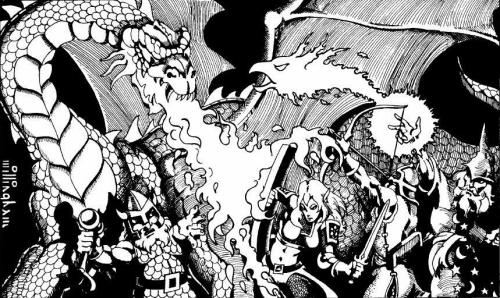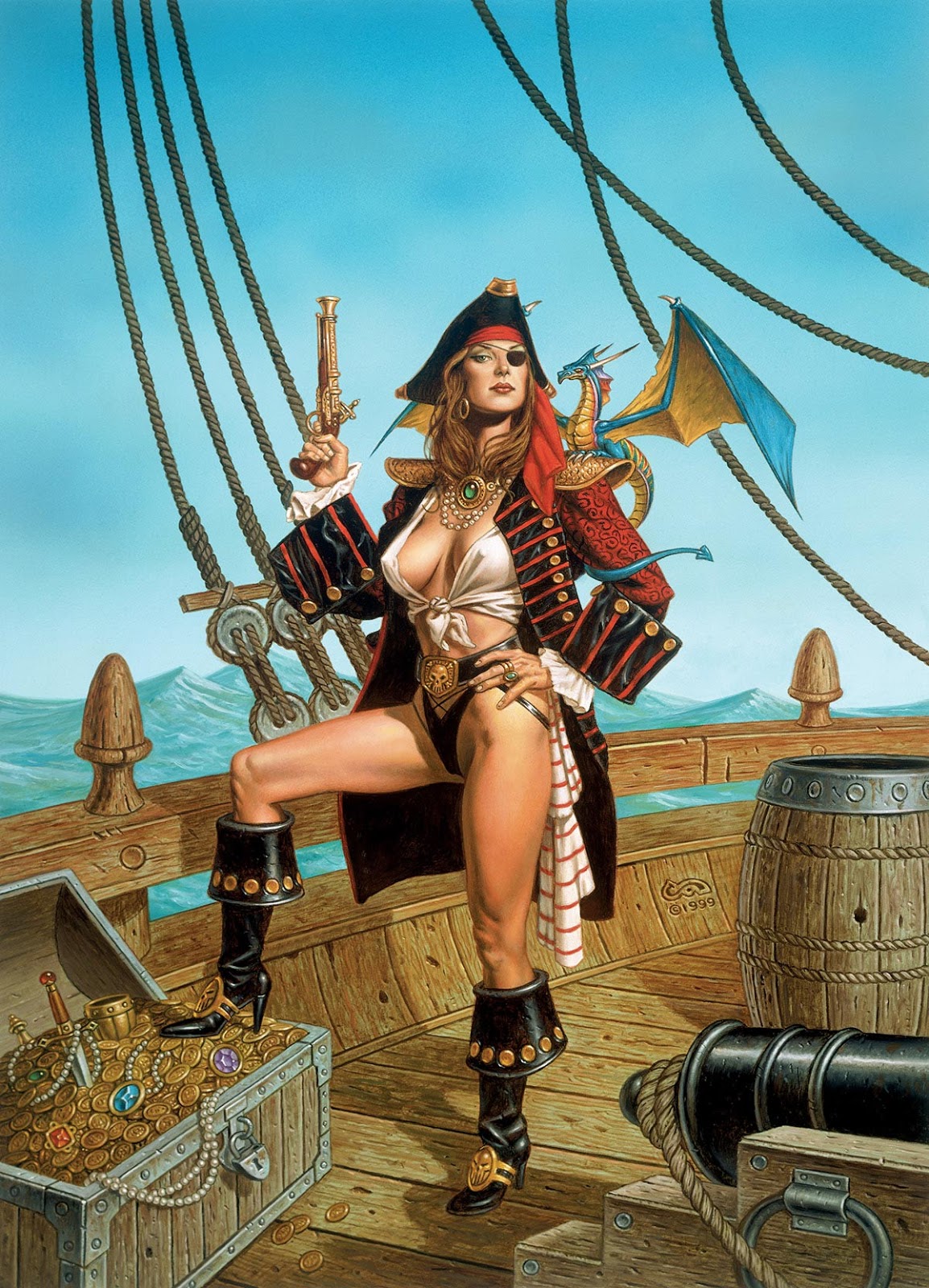Paul Farquhar
Legend
Come to think of it, I've never seen Ming the Merciless, Mordenkainen and Lenin in the same room together...I saw Ming The Merciless personally, so it's probably supposed to be Mordenkainen
Come to think of it, I've never seen Ming the Merciless, Mordenkainen and Lenin in the same room together...I saw Ming The Merciless personally, so it's probably supposed to be Mordenkainen
That sounds like one hell of an adventure path.Come to think of it, I've never seen Ming the Merciless, Mordenkainen and Lenin in the same room together...
I'm one of those people who believes that context matters. Cheesecake is fine in some places such as a pinup calendar hanging in my office at home but it would be inappropriate for me to hang that same calendar on the wall in my office at work. Likewise, cheesecake in a game book designed for a general audience isn't appropriate.
Cheesecake is a bit more than just a woman wearing a revealing outfit. It's about body language, facial expressions, and attracting the male gaze (obligatory Wiki link). Very often a shirtless male warrior in a furry bikini bottom wielding a large axe is portrayed very differently from a barely dressed female warrior in a fur bikini.
For me, personally, I think cheesecake just looks silly in most game books because it's just not the right context. The pirate woman linked to earlier in this thread is a great example. A similar pose where she doesn't have her treasures hanging out for me to look at might have been fine. But if it's supposed to conjure up the image of an adventurer it just looks so silly to me. So I'm glad D&D moved away from cheesecake.
I'm... going to both agree and disagree with you.I just remembered a cool bit of art in 5e.
In the SCAG, at the beginning of the class section, there's a piece of art detailing some adventurers fighting a red dracolich. What's neat is that, in the art depicting the classes, they have the four adventurers that were fighting the dracolich. Nothing too big, and is not really on topic, but I thought it was neat.
I mean, they don't have to do it, I just think it's neat that they did, and seeing other stuff like it would be cool.I'm... going to both agree and disagree with you.
On one hand, you are completely right that is is really need seeing "the characters" (iconics or whatever) having adventures over a number of pieces of art. It ties things together, implies a grand adventure, simulate the imagination etc.
On the other hand, if each piece of art is "unique" (not tied together by common characters), then each piece is it's own world, own adventure, and it simulates the imagination even more.
On the other other hand, the threshold of quality is much higher without those linking elements. Ie if it's merely "good-ish", your imagination may not take flight.
So those re-occurring characters are either imagination enablers... or artistic crutches. I don't know which is true...
I'd also point out that that picture is from Basic/Expert D&D, so, no Mordenkainen, and, it's also a cleric, note the cross on the holy symbol on his chest. We know he's not a wizard, since he doesn't have a pointy hat:

And this, right there, is pretty much the end of the argument AFAIC. Sure, some people don't mind cheesecake art. Fine. I mean, Vajello is popular to this day. Let's be honest here.
But, in a game that is meant to appeal to everyone, and not just young, white men, which is what Caldwell was drawing for, perhaps avoiding the whole thing altogether might not be a bad idea. And, if you don't think Caldwell was drawing for young, white men, I'll point you to this piece:

Which, btw, adorns the cover of my Pirates D20 book by Living Imagination. Sure, it's 3pp, but, it's not like Caldwell hadn't done other pieces just as blatant.
